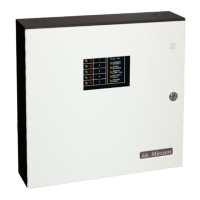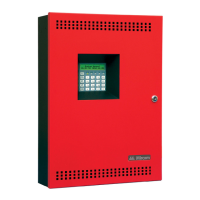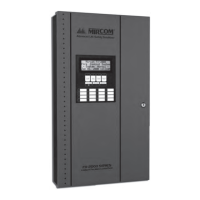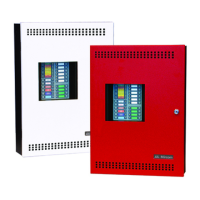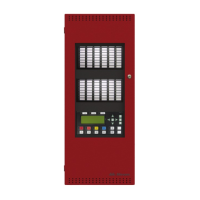54
Indicators, Controls, and Operation
• The Circuit Status LED turns on steady amber when the corresponding circuit is in
alarm. This LED will also flash at the fast flash rate while an active circuit is being
reconnected.
8.3.4 Trouble-Only Circuit Indicators
The operation of trouble-only circuit indicators applies to initiating circuits configured as
trouble-only circuits. The Circuit Trouble LED flashes at the trouble flash rate to indicate circuit
trouble (open circuit or Class A (Style D) trouble) or if the circuit is disconnected. The Circuit
Status LED also flashes amber at the trouble flash rate to indicate a short-circuit trouble.
8.3.5 Signal Circuit Indicators
The operation of signal circuit indicators applies to indicating circuits of any type. The Circuit
Trouble LED flashes amber at the trouble flash rate to indicate short-circuit or open circuit
trouble, or a disconnected circuit.
8.3.6 Relay Circuit Indicators
Relay circuit trouble indicators flash amber at the trouble flash rate while the corresponding
circuit is disconnected.
8.4 Circuit (Zone) Disconnect Switches
Circuit (zone) disconnect switches are provided for all initiating, indicating, and relay circuits
on the fire alarm control panel. For the first four indicating circuits on the main fire alarm
module, the disconnect switches consist of either a bank of DIP switches (or slide switches in
"S" Version Chassis) DIP switches numbered one to eight correspond to the circuits indicated
in the indicator column from top to bottom
Changing a circuit disconnect switch to the ON position bypasses the associated circuit, turns
on its trouble indicator, and activates common trouble. While a circuit is disconnected, all
changes in status (alarms and troubles) on that circuit are ignored. The panel does not
activate disconnected indicating circuits.
Disconnecting an active latching initiating circuit such as water-flow alarm, sprinkler alarm,
general alarm, and latching supervisory does not affect its status until the panel is reset.
Disconnecting active non-latching initiating circuits including non-latching supervisory and
trouble-only causes them to behave as if conditions returned to normal. Disconnecting an
active indicating circuit immediately deactivates the circuit.
When an initiating circuit disconnect switch is returned to its normal state, the panel checks the
state of the circuit. If the circuit is active, the Status LED flashes for ten seconds at the fast
flash rate without processing the input. If the circuit is not re-disconnected by then, it will be
processed as a new input.
Disconnect switches are also used during Configuration Mode (see page 60) and Walk Test
Mode (see page 72) as described in those sections.
8.5 Single Stage Operation
In a single stage system, all alarm inputs are treated in a similar manner. Alarm inputs include
any of the following: non-verified alarm, verified alarm, sprinkler alarm, water-flow alarm, and
general alarm circuits. Any of these alarm inputs occurring when the panel is not already in
alarm cause the following:
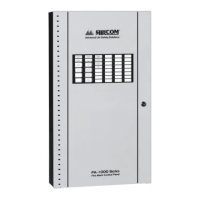
